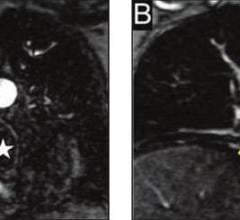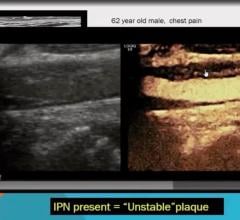September 25, 2008- The use of the CVRx Rheos System in treating early-stage heart failure patients shows Rheos Therapy significantly improved heart structure and function, according to clinical data presented this week by John D. Bisognano, M.D, Ph.D., associate professor of medicine at the University of Rochester School of Medicine and Dentistry, New York, at the Heart Failure Society of America (HFSA) 12th Annual Scientific Meeting in Toronto.
In heart failure patients, the heart becomes enlarged and functions inefficiently, increasing the risk of death and poor quality of life. Reducing heart size lowers these risks.
The clinical data showed that continuous use of Rheos Therapy in early-stage heart failure patients remodels cardiac structure and improves heart function. The Rheos System was implanted in 18 patients at five medical centers in Europe and the U.S who had early-stage heart failure and high blood pressure, and who were on optimal medication levels. After one year of Rheos therapy, left ventricular mass and left atrial dimension were reduced toward normal levels, and blood pressure was lowered.
“We believe the Rheos System can have significant therapeutic value in heart failure patients,” said Dr. Bisognano. “The current clinical trial evaluating the Rheos System will help us further understand how Rheos Therapy addresses heart failure.” The first study evaluating Rheos Therapy in diastolic heart failure patients has begun in Europe.
The Rheos System uses the CVRx-patented Baroreflex Activation Therapy technology that is designed to activate the carotid baroreceptors, central components of the body’s natural cardiovascular regulation system. When the baroreceptors are activated, signals are sent through neural pathways to the brain and interpreted as a rise in blood pressure. The brain works to counteract this perceived rise in blood pressure by sending signals to other parts of the body (heart, blood vessels and kidneys) that relax the blood vessels and inhibit the production of stress-related hormones. These changes enable the heart to increase blood output, while maintaining or reducing its workload, thereby reducing blood pressure when it is elevated and alleviating the symptoms of heart failure.
The Rheos System is comprised of a small pulse generator implanted under the collar bone; two thin lead wires implanted at the left and right carotid arteries and connected to the pulse generator; and the Rheos Programmer System, an external device used by doctors to noninvasively regulate the activation energy from the generator to the lead wires.
For more information: www.cvrx.com.
News | September 24, 2008


 August 17, 2023
August 17, 2023 







